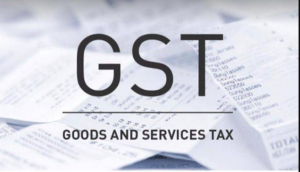Telecommunication sector, with its monumental outreach, has been considered to be one of the fundamental economic drivers of India, consisting of more than a billion subscribers and connections of both the postpaid plans and prepaid recharge, stretching its arms across the state boundaries. The sector, which till two decades ago was a monopoly of the government, now has a plethora of private players, each competing with each other to provide the best of services and offers. In the present scenario, the sector reeling under the high demand created by the Digital India Initiative was holding its breath for GST (Goods and Service Tax), the newly announced tax reform of India.

The GST Council, led by Finance minister, Arun Jaitley, was working on the premise, ‘one country, one tax’ concept. Like most of the services, mobile subscribers were paying 15% service tax on their bills and the sector was looking for a respite and a lowered rate for the ease of its consumers. However, the outline of GST, has added mobile phoning subscription to the 18% tax slab, a 3% higher structure than before. This slab remains the same for every subscriber across the country and has to be charged by every prepaid and postpaid service provider.
Although Telecom Minister Manoj Sinha stated “Telecom operators have already been paying 15 per cent tax, and a 3 per cent difference is there. We are considering that at our level” the industry has expressed its despair against the higher taxes the consumers is expected to bear.” The upcoming effect on the consumers are clearly indicated in the words of COAI director-general, Rajan S Mathews, “We are disappointed that there has been no change in the GST rate for telecom, which is an essential service. It will increase the cost to consumers.”
What does it mean for the Consumers?
As the GST regime kicks in there will be a hike in the price of postpaid bills and mobile phone recharge.
For the postpaid users, the 3% increase in tax will reflect in their postpaid bill payments and the talk time will be axed for the current prepaid consumers. For instance, under the current taxation, if the postpaid usage was around 500, then the tax levies was 15% increasing the postpaid bill amount to Rs. 575. And under the GST regime, consumers will not have to pay another 3% or Rs. 15 extra, taking the total cost of postpaid plans to Rs. 590 per month.
For the prepaid customers, the effective talk time will shrink. On recharging a prepaid mobile with Rs. 100 top up, the talk time usually received is of Rs. 85. After the activation of GST, customers will get Rs. 82 talk time, a deduction of Rs. 3. A report highlights the utter confusion prevailing among prepaid customers, who are more price conscious and recharge their prepaid offers with lower values. Since physical recharge shop owners are still unclear about the exact details with regards to GST, some of them are continuing with the pre-GST recharge rates. This has further added to the confusion among the consumers regarding GST.
The Final Word
Already stressed by the high-level of competition within the industry as well as mobile communication becoming a necessity rather than a luxury, the telecom industry was expecting a comparative lower tax slab from GST. However, it’s not all bad for consumers who may be paying a 3% higher slab, but with unlimited calling plans and many other valuable benefits to both postpaid and prepaid customers, the price may not hurt as much in the long run.




